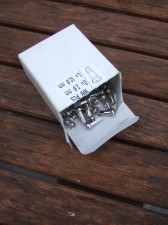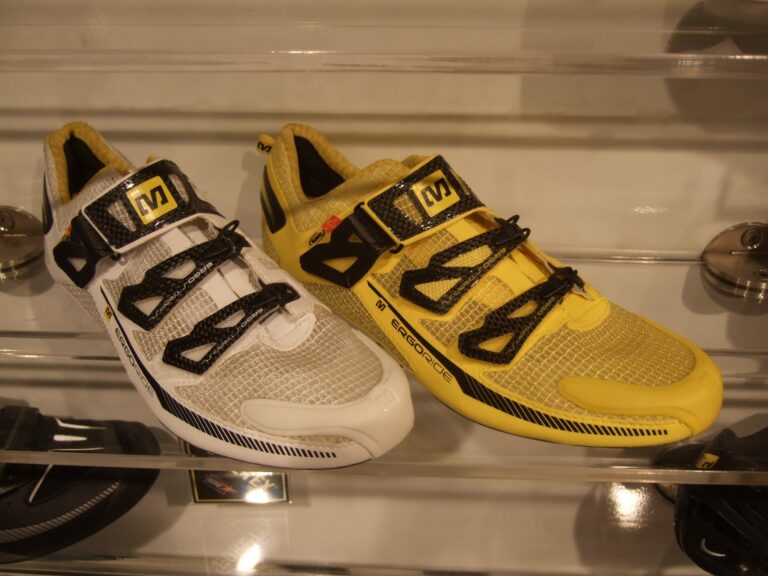 Part two of RCUK’s winter wheelbuild was going to be about finding spoke lengths; instead, that’ll have to wait until part three, part two now being devoted to the selection of rims, hubs and spokes.
Part two of RCUK’s winter wheelbuild was going to be about finding spoke lengths; instead, that’ll have to wait until part three, part two now being devoted to the selection of rims, hubs and spokes.
Hubs first; these are Shimano 105 10-Speed (HB- and FH-5600-L) in Slate Black and feature Shimano’s internal grease sleeve, which is designed to ensure correct lubrication during the hubs’ service life. The finish looks good and durable and the front hub flanges are strong enough for radial spoke lacing, so they should make for a reliable winter and training wheelset.
Rims are that old clincher chestnut, Mavic’s ever-popular Open Pro. The rim sticker includes a handy at-a-glance spoke count indicator, in this case showing 32 holes for each rim. The one going on the front will be a plain old Open Pro in Black, while that on the back will be an Open Pro Ceramic.
 Our experience with the ceramic rims is that the enhanced durability of the braking surface over plain aluminium when used in poor road conditions is better exploited at the rear, the rear rim wearing much more rapidly than the front because gritty water gets sprayed over the back wheel by the front while the front stays relatively clean. At the same time, since most braking, even in wet weather, should be done with the front brake, the inconsistent braking performance associated with the ceramic coating is of less importance when it affects only the rear wheel.
Our experience with the ceramic rims is that the enhanced durability of the braking surface over plain aluminium when used in poor road conditions is better exploited at the rear, the rear rim wearing much more rapidly than the front because gritty water gets sprayed over the back wheel by the front while the front stays relatively clean. At the same time, since most braking, even in wet weather, should be done with the front brake, the inconsistent braking performance associated with the ceramic coating is of less importance when it affects only the rear wheel.
Spoke choice for this type of build comes down to three main factors: manufacturer, gauge and nipple material. We are going with good old brass for the latter since this is a training/winter build with durability the primary aim. Spokes will be double-butted 14/16g stainless steel except, just possibly, on the rear drive side, where plain gauge will take the high tension required without much stretch.
 Double-butted spokes actually build a stronger wheel precisely because they stretch more than plain gauge for the same tension. What this means is that, as the rim deflects inwards when passing over a bump, it can deflect more when built with d/b spokes before the tension of the spokes in the vicinity, which is what prevents a classic nipple unscrewing, relaxes completely. But since the rear drive side spokes require around twice the tension of those on the non-drive, they should stretch enough even if of plain gauge.
Double-butted spokes actually build a stronger wheel precisely because they stretch more than plain gauge for the same tension. What this means is that, as the rim deflects inwards when passing over a bump, it can deflect more when built with d/b spokes before the tension of the spokes in the vicinity, which is what prevents a classic nipple unscrewing, relaxes completely. But since the rear drive side spokes require around twice the tension of those on the non-drive, they should stretch enough even if of plain gauge.
The two most respected spoke manufacturers are DT Swiss and Sapim. Both build into a fine wheel. We’ll go for DT Swiss here because the UK distributor, Madison Cycles, also looks after Shimano.
We’ll go through the spoke length calculation in part three.

